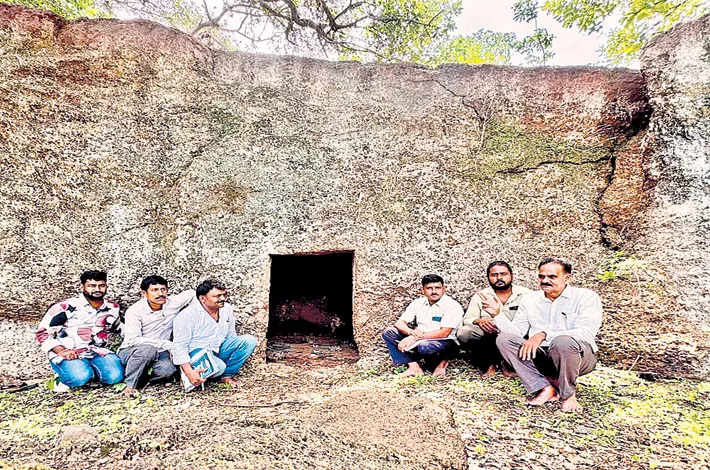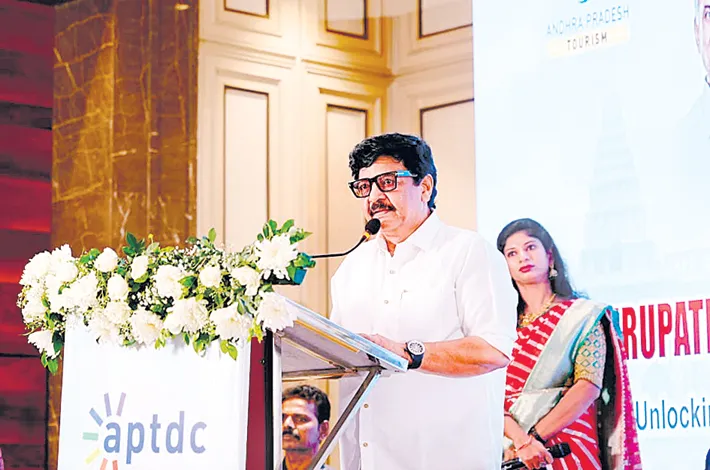Meditation retreats of Jain monks in Vikarabad call for attention
01-06-2025 12:00:00 AM

Among the damaged artefacts is a broken statue in the artha paryankasana pose — a meditative reclining posture — further reinforcing the site's Jain heritage
EKALAVYA MALLEPALLI | ANANTHAGIRI
Just 90-odd kms from Hyderabad from where the River Musi originates in Vikarabad lie caves that date back to over 1100 years which were used by Jain monks as meditative retreats. Today, these caves tell tales of a forgotten era and need to be preserved says archaeologist Dr. E. Sivanagireddy, CEO of Pleach India Foundation.
The ancient Jain rock-cut caves in Anantagiri, located in the Vikarabad district features 15 rock-cut caves that are believed to have served as meditation retreats for Jain monks during the rainy season. These caves were also used for the practice of Sallekhana Vrata — a ritual of voluntary and peaceful fasting unto death.
Mostly rectangular or square in shape, the caves measure between 2 to 6 meters in length and 2 to 3 meters in width, with an average depth of around 2.5 meters. Their east-facing entrances appear to be intentionally aligned, reflecting principles of Jain ascetic tradition. Inside the caves are stone-cut beds and small wall niches designed to hold oil lamps, offering a glimpse into the minimalist and meditative lifestyle of the monks who once inhabited them. Of the original 15 caves, only six remain intact.
The others have been severely damaged, primarily due to recent road-widening activities near the pathway leading to the Musi River’s source. Among the damaged artefacts is a broken statue in the artha paryankasana pose — a meditative reclining posture — further reinforcing the site's Jain heritage. “Immediate conservation of these ancient Jain caves is essential to protect Telangana’s spiritual and historical heritage,” emphasized Dr. E. Sivanagireddy, urging swift action from the local administration.
He appealed to the Ananta Padmanabha Swamy Temple management and the Vikarabad Municipality to take urgent steps for preservation. His recommendations included removing modern whitewash from the cave interiors, constructing walkways for safer access, and installing educational signage to inform visitors of the site’s religious and cultural importance.
Dr. Padmanabham, chairman of the temple trust, assured full cooperation in safeguarding the heritage site. Several heritage enthusiasts, including D.R. Syamsundar Rao, B. Venkatareddy, B. Sai Kiran Reddy, and Ellayya, also participated in the site visit. Experts and local historians stress that preserving these 1100-year-old Jain caves is not only a matter of cultural pride but also a critical step in protecting Telangana’s diverse religious legacy for future generations.








